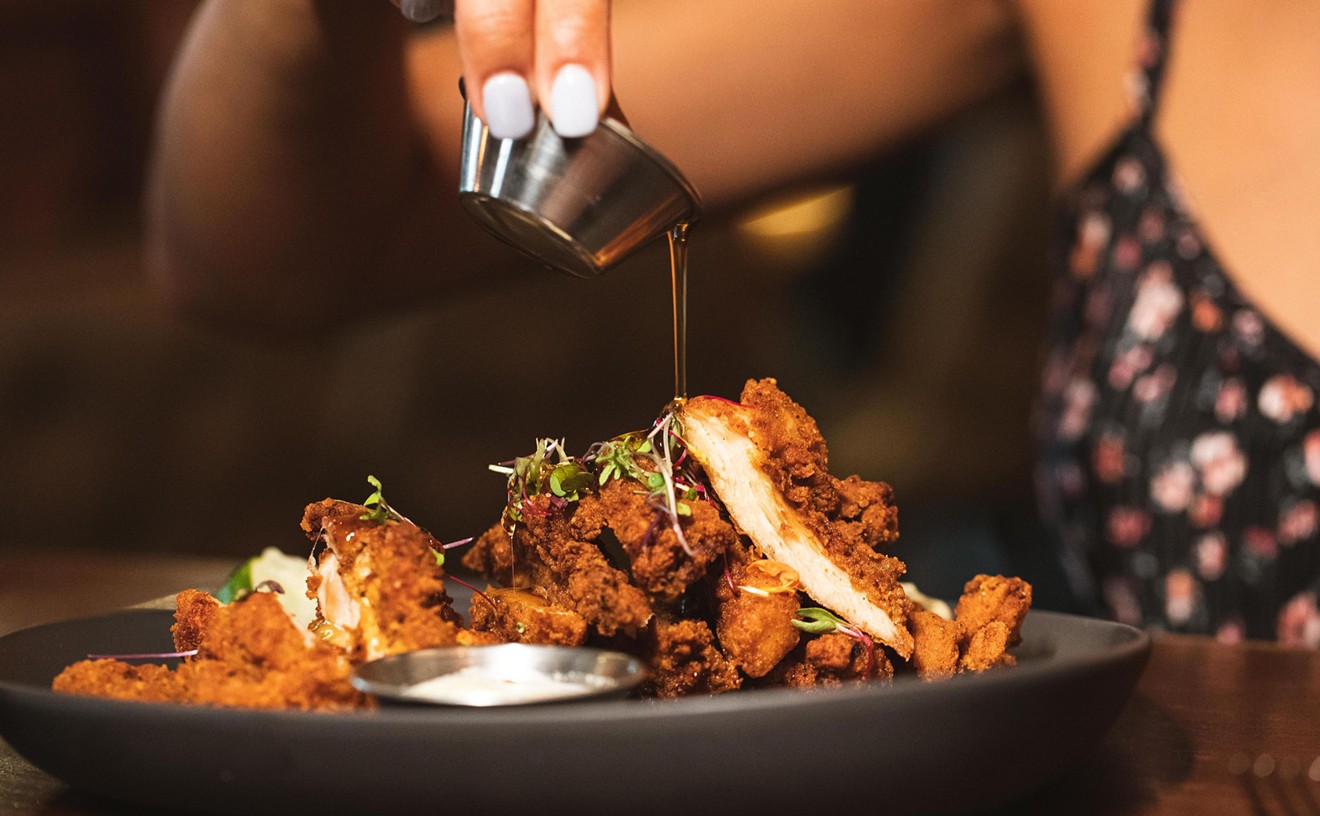Filleting fish has become borderline passé among home cooks. The practice is commonly viewed as a forgotten technique that is reserved solely for restaurant kitchens, guided by master chefs and expert fishmongers.
But there is definitely a general curiosity about the subject. During the time that I photographed Sam Gorenstein at My Ceviche, onlookers began trickling in and gathering in the small restaurant space. With camera phones in hand, many started snapping shots of what had once felt like a overlooked practice. Others stood in awe, captivated by the chef's handling work on a whole Spanish mackerel.
Gorenstein has already shared a few great tips on selecting the freshest fish available and his main advice is to keep it local and to buy the fish whole. In light of his tips, take a brief step back from all of the conveniences of modern day food stores and take a stab at starting dinner with a whole fish. Just remember though, when it comes to this technique, it's all about filleting the fish with finesse.
1. Gather up your equipment
Different types of fish will require different types of sharp knives. For the Spanish mackerel used in this demonstration, Sam used a flexible, long knife, about one and a half inches thick (far right). For bigger fish like tuna, you might want to use a thicker, heavier knife (second to left). For smaller fish like sardines, the thinner knife that is pictured above would suffice (second to right). Also, remember to start and end with a clean cutting board. Sam cleans his plastic board with soap, warm water and some bleach.
2. To begin filleting, lay the fish on its side and make a deep, vertical cut right behind the gills
You should only go about halfway through the the fish.
3. Create incisions on the dorsal (top side) of the fish
Use the tip of your knife to create this incision, while holding the fish down with your other hand. Gliding your knife, create the cut about halfway through the thickness of the fish.
4. Repeat the same procedure, but on the ventral side of the fish (bottom side)
But, on this side, you'll see some guts, so prepare yourself accordingly.
5. Separate the flesh from the bones
Use the tip of your knife to fully divide the flesh from the bones. You will literally be peeling off the flesh with your knife. It should up open like a book.
7. Flip the fish over and repeat steps 2 - 5, the same steps for removing the flesh
End by removing the entire flesh from the bone, like a book again.
8. Remove the skin
With the thinner side of the fish pointing towards your body, insert the knife right under the skin and begin to pull it away from the flesh. Continue pushing your knife through the flesh until you can completely remove the skin.
9. Separate flesh from bloodline
Yesterday we learned all about the magic of bloodlines and how they can signal freshness. Today, cut in the middle of the bloodline to create two separate pieces of fish.
Slice up your fillet for some sashimi, fry it, grill it, broil it. Cook it however you'd like. Regardless of your preferred preparation, just remember to brag to your dinner guests because, for this fish, you rocked it with finesse and filleted it just like Sam Gorenstein.
Follow Short Order on Facebook and Twitter @Short_Order.










